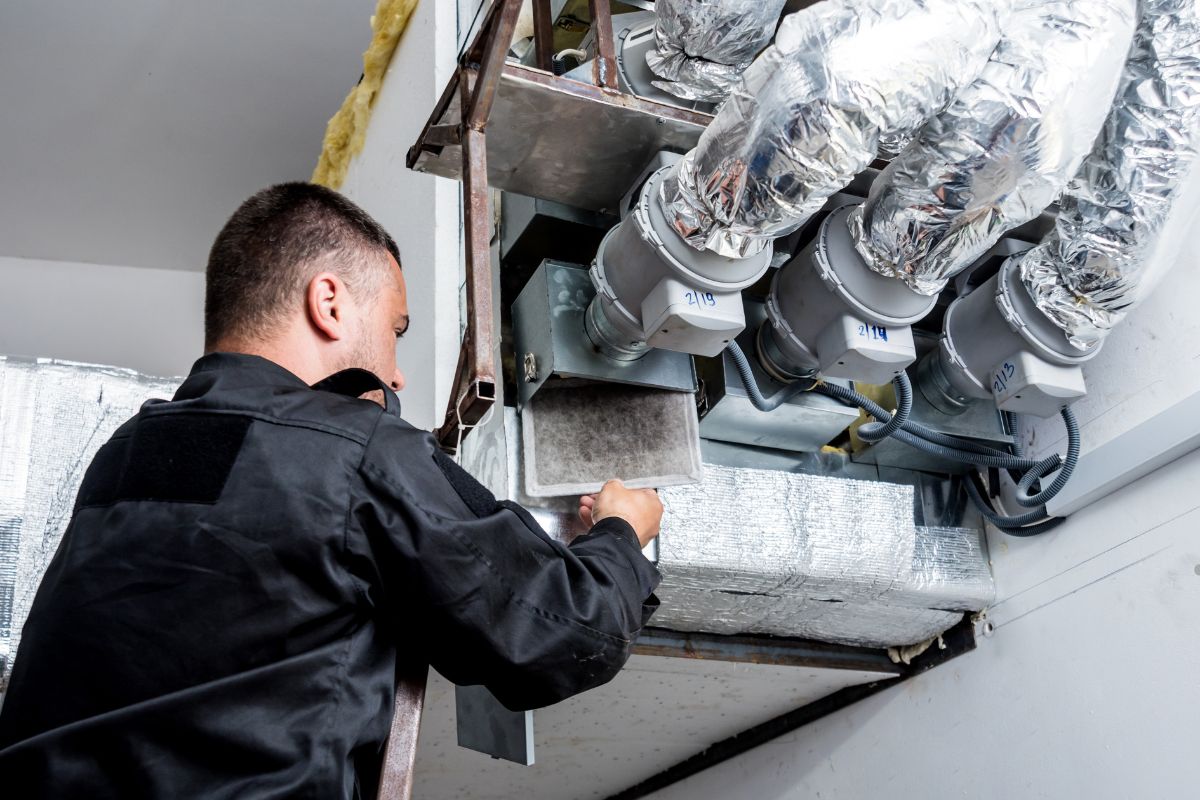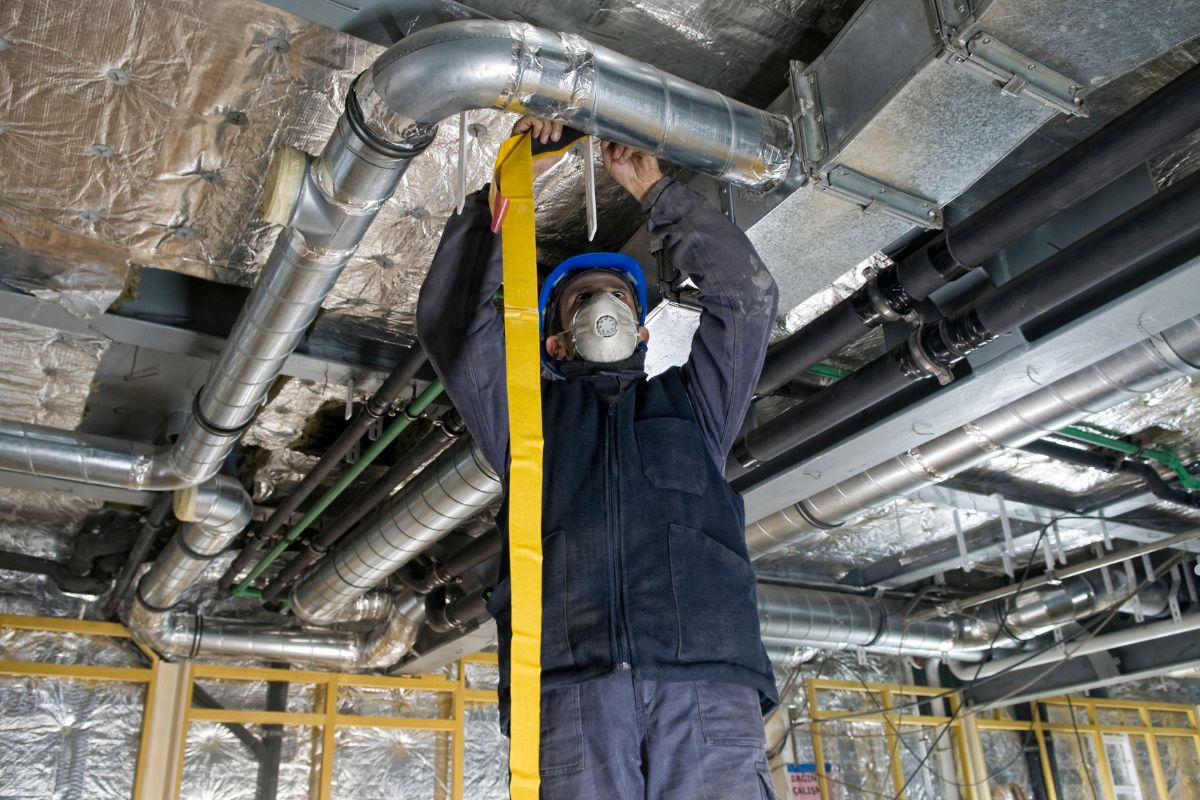
While your HVAC system can play a role in preventing mold growth by circulating air and controlling humidity, it’s not a foolproof solution. In fact, under certain conditions, it can even contribute to mold problems. Understanding how your HVAC interacts with mold is crucial for maintaining a healthy home environment. Let’s explore the relationship between HVAC systems and mold, and what you can do to keep your home mold-free.
Introduction: Understanding HVAC and Mold
HVAC (Heating, Ventilation, and Air Conditioning) systems play a crucial role in maintaining indoor comfort by regulating temperature and air quality. Mold, a type of fungus, thrives in damp and humid conditions, spreading through airborne spores that settle on surfaces like drywall, wood, and fabric when moisture is present. The link between the two? Your HVAC system directly affects humidity levels and airflow, which can either prevent or encourage mold growth. If you suspect mold in your HVAC system, our professional mold remediation services can help! Contact us today for a thorough inspection and expert solutions.
How HVAC Systems Can Contribute to Mold Growth

Unfortunately, HVAC systems aren’t always mold-fighting heroes. Several factors can turn them into mold-growth enablers:
- Moisture and Condensation: Air conditioners cool air, and this process can create condensation. If the condensation isn’t properly drained, it can collect inside the unit or ductwork, providing the perfect breeding ground for mold.
- Poor Ventilation: Inadequate ventilation can lead to stagnant air and pockets of high humidity, encouraging mold growth. If your HVAC system isn’t properly circulating air throughout your home, some areas may become more susceptible to mold.
- Dirty Air Filters: Dirty air filters trap dust, pollen, and other organic matter. This buildup can become a food source for mold, and the filters themselves can become moldy if exposed to moisture.
How HVAC Systems Can Help Prevent Mold
The good news is that HVAC systems can also be powerful allies in the fight against mold:
- Proper Air Circulation: By circulating air throughout your home, your HVAC system helps to distribute humidity evenly, preventing the formation of damp pockets where mold can thrive.
- Dehumidification: Many air conditioners and some HVAC systems have dehumidification features that remove excess moisture from the air. This is especially helpful in humid climates where mold growth is more common.
- Filtration: Air filters trap mold spores, dust, and other allergens, preventing them from circulating through your home. High-efficiency particulate air (HEPA) filters are particularly effective at trapping even the smallest mold spores. Consider upgrading your air filters to HEPA filters for enhanced mold prevention.
Mold is a frequent household issue that can lead to health concerns and structural damage. A common question people ask is: What temperature kills mold? While there isn’t a single definitive temperature, mold typically thrives between 40°F and 100°F. However, prolonged exposure to temperatures above 140°F (60°C) can effectively eliminate many types of mold. On the other hand, freezing temperatures may put mold into a dormant state but won’t necessarily destroy it. For a detailed guide on how temperature affects mold growth and effective remediation strategies, check out our full article: Optimal Temperatures for Killing Mold.
HVAC Maintenance Tips for Mold Prevention
Preventing mold growth in your HVAC system requires regular maintenance:
- Regular Filter Changes: Change your air filters every 1-3 months, or more often if you have pets or allergies. This will help to keep your system clean and prevent mold from growing on the filters.
- Professional Cleaning and Inspection: Schedule regular professional HVAC cleaning and inspection to identify and address potential mold problems before they become serious. A professional can also clean the coils and ductwork, which are common areas for mold growth.
- Drain Line Maintenance: Ensure that the condensate drain line is clear and free of obstructions. A clogged drain line can cause water to back up into the system, creating a breeding ground for mold.
- Ensuring Proper Ventilation: Ensure proper ventilation in your home, especially in moisture-prone areas like bathrooms and kitchens, to reduce the risk of mold growth. Need expert mold prevention solutions? Call us today!
Signs of Mold in Your HVAC System
Be on the lookout for these warning signs that indicate mold may be present in your HVAC system:
- Musty Odors: A persistent musty odor coming from your vents is a strong indicator of mold growth.
- Visible Mold Growth: Check around your HVAC unit, ductwork, and vents for visible signs of mold.
- Allergic Reactions: If you experience increased allergy symptoms, such as sneezing, coughing, or itchy eyes, when the HVAC system is running, it could be a sign of mold.
What to Do If You Find Mold in Your HVAC

If you suspect mold in your HVAC system, it’s crucial to take action immediately:
- Professional Mold Remediation: Contact a qualified mold remediation specialist to assess the situation and remove the mold safely and effectively.
- HVAC System Cleaning: Have your HVAC system professionally cleaned to remove any remaining mold spores and prevent future growth.
Avoid trying to clean mold in your HVAC system on your own. Disturbing mold can release harmful spores into the air, spreading contamination and posing serious health risks. For safe and professional mold removal, call us today!
Frequently Asked Questions About HVAC and Mold
Will running my AC prevent mold?
Running your AC can help prevent mold by reducing humidity, but it’s not a guarantee. Proper maintenance and addressing any moisture issues are also crucial.
How often should I change my air filter to prevent mold?
Generally, every 1-3 months is recommended, but check your filter regularly and change it more often if needed, especially if you have pets or allergies.
Is it safe to clean mold in my HVAC system myself?
No. Cleaning mold yourself can release spores and worsen the problem. Always hire a professional for mold remediation.
Can a dehumidifier attached to my HVAC system help with mold?
Yes, a whole-house dehumidifier integrated with your HVAC system can significantly reduce humidity and help prevent mold growth.
How do I know if I need professional mold remediation?
If you see visible mold, smell a musty odor, or experience unexplained allergy symptoms when your HVAC is running, it’s best to consult with a professional.
Maintaining a Healthy Home with Your HVAC System
Your HVAC system plays a vital role in mold prevention, but without proper care, it can also contribute to mold growth. By keeping up with regular maintenance, managing humidity levels, and addressing moisture issues promptly, you can ensure a healthier and more comfortable home environment. Stay proactive, watch for signs of mold, and seek professional help if needed. For expert mold inspection and removal services, contact us today and let us help you maintain a mold-free home!
